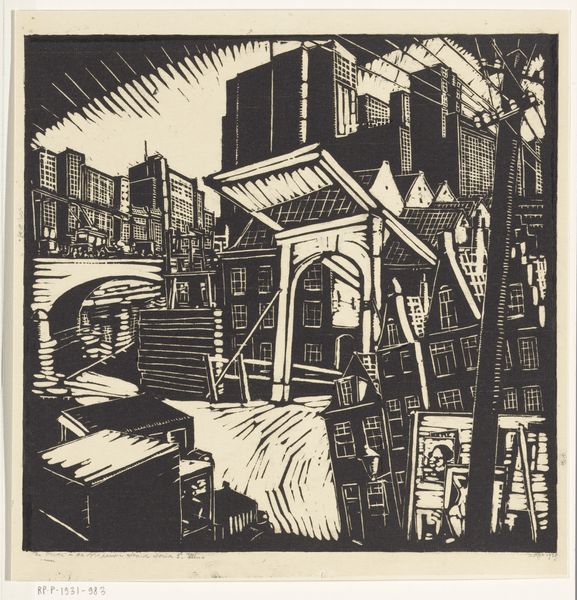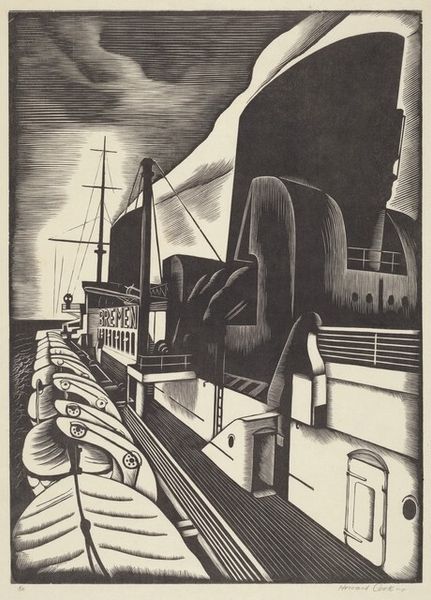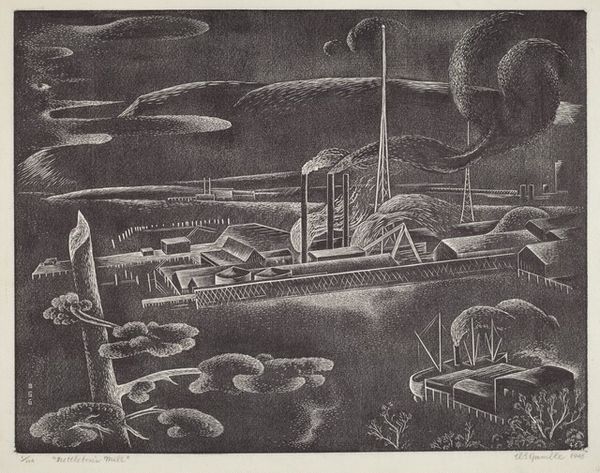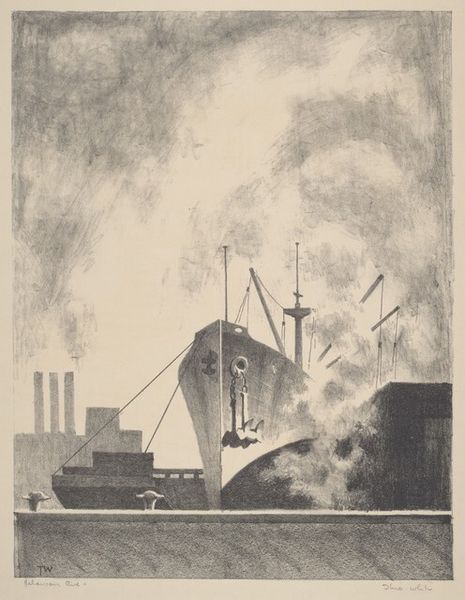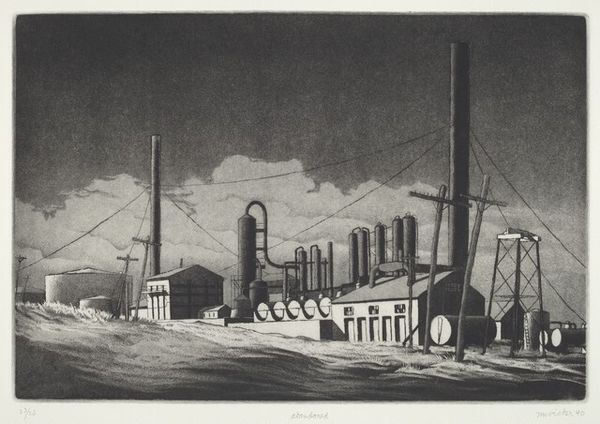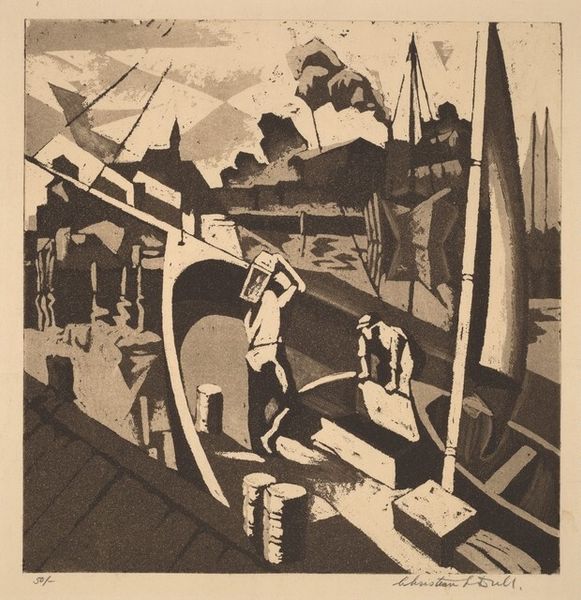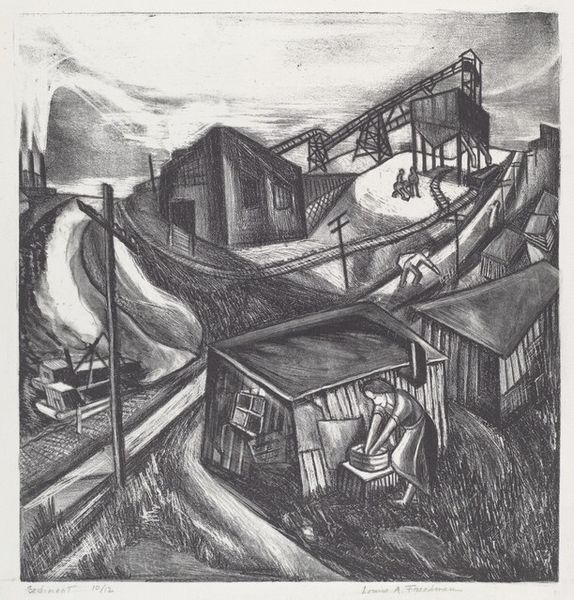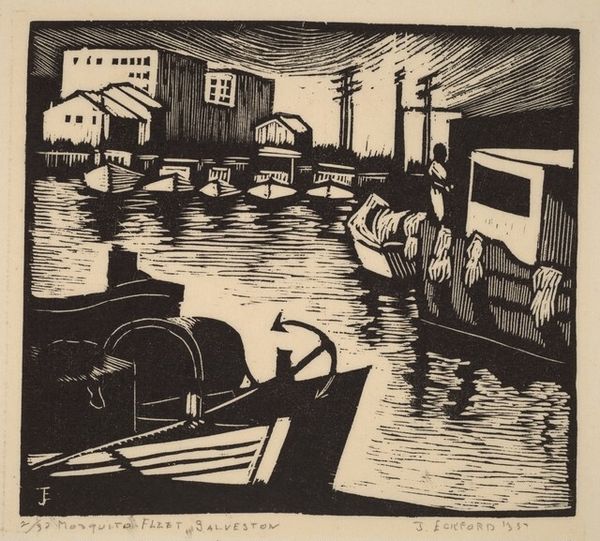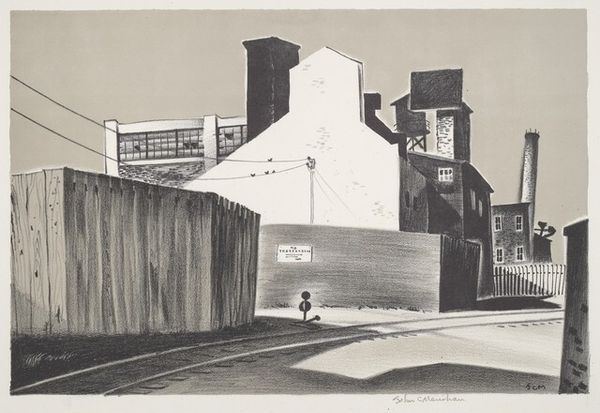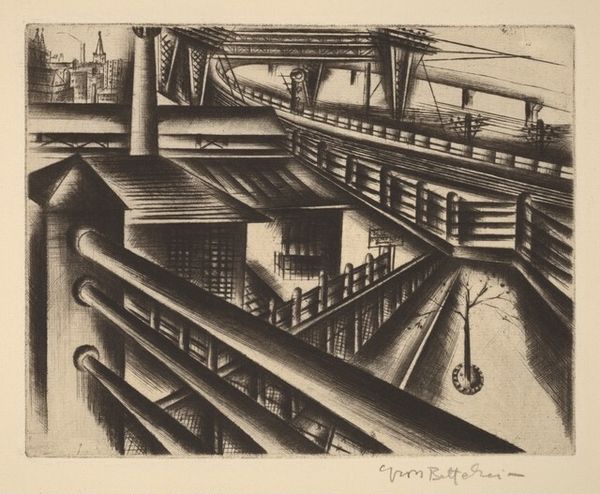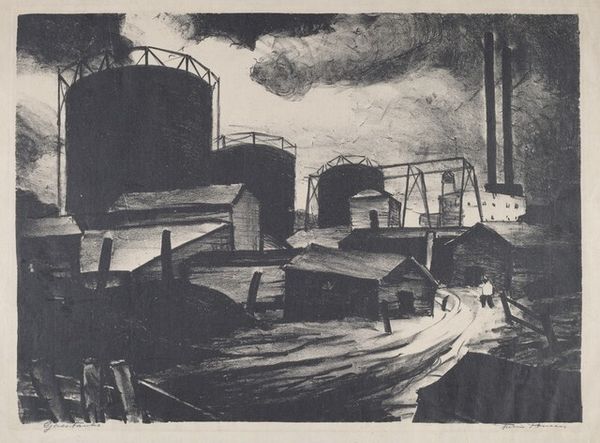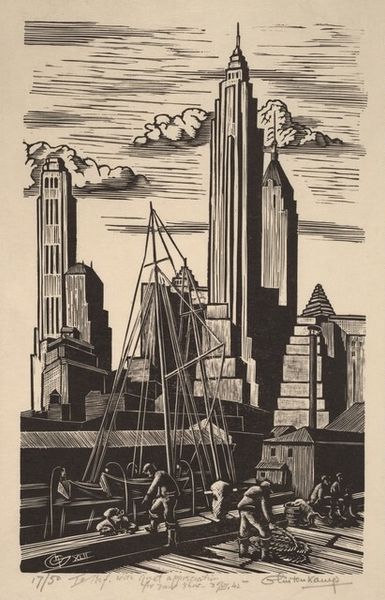
print, woodcut
# print
#
woodcut
#
cityscape
#
modernism
#
realism
Dimensions: image: 170 x 177 mm sheet: 215 x 218 mm
Copyright: National Gallery of Art: CC0 1.0
Editor: So, here we have Leonard M. Havens' "Industrial Reflections" from 1938, a woodcut print. It's incredibly stark – almost oppressive with the towering industrial structures. What strikes you most about this piece? Curator: What I see here is a powerful commentary on the tension between industrial progress and the natural world, particularly poignant in the late 1930s. The artist is positioning us to consider class and power, how the relentless march of industry impacts marginalized communities living by these waterways. How does this reading affect your impression of the composition? Editor: That makes me see it in a completely different light. I was initially just reacting to the visual weight, but now I see how the factory dominates the lives and environment of the people living by the water. Curator: Exactly. Consider how the medium, a woodcut, contributes to this message. The stark contrast between light and dark amplifies the feeling of unease. It also evokes a certain visual language common to politically engaged prints from the era. Editor: I see that. The harsh lines create this very definite feeling of...almost exploitation? Everything is very stark and uncompromising. Do you think the artist had a particular agenda? Curator: I believe Havens, consciously or unconsciously, tapped into a growing anxiety. The water, typically a source of life, seems almost stagnant, overshadowed by the factory. It's crucial to examine how artists of this era grappled with themes of urbanization and social inequity in the face of rapidly changing socioeconomic systems. Editor: Wow, I hadn't even considered that aspect! Now it feels more like a call to awareness than just a depiction of a landscape. Curator: Precisely. Art can function as a mirror reflecting societal anxieties. By analyzing art like Havens' "Industrial Reflections" in its historical and social contexts, we can foster richer understanding and encourage dialogues that are still relevant to contemporary theory and movements. Editor: Definitely! Thank you. Now, seeing it in relation to social issues during the industrial revolution, I know where to begin my research.
Comments
No comments
Be the first to comment and join the conversation on the ultimate creative platform.
